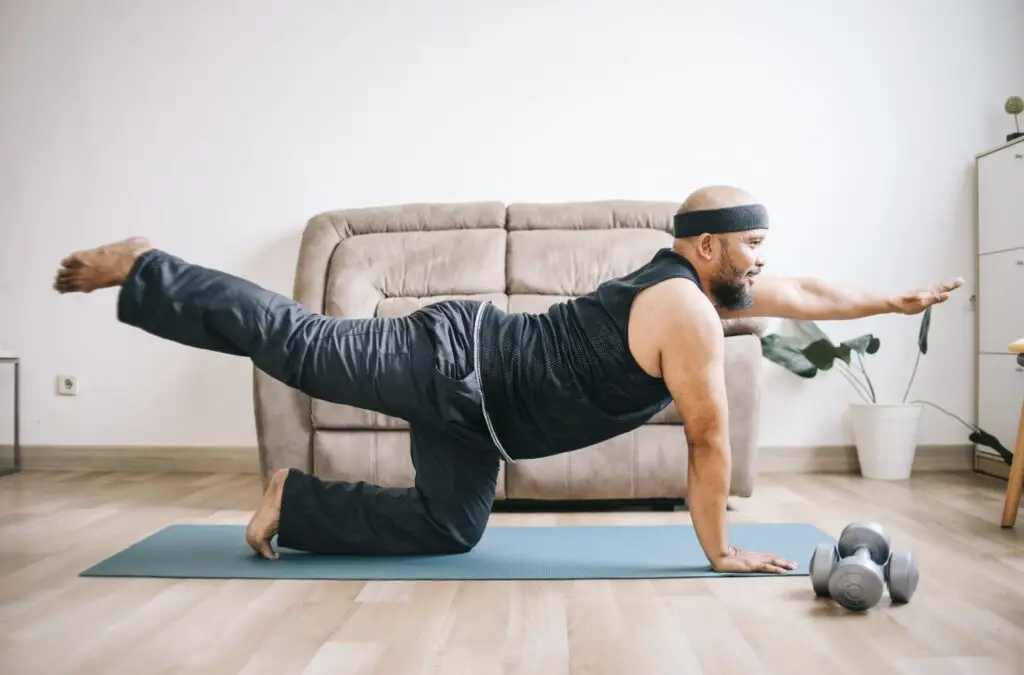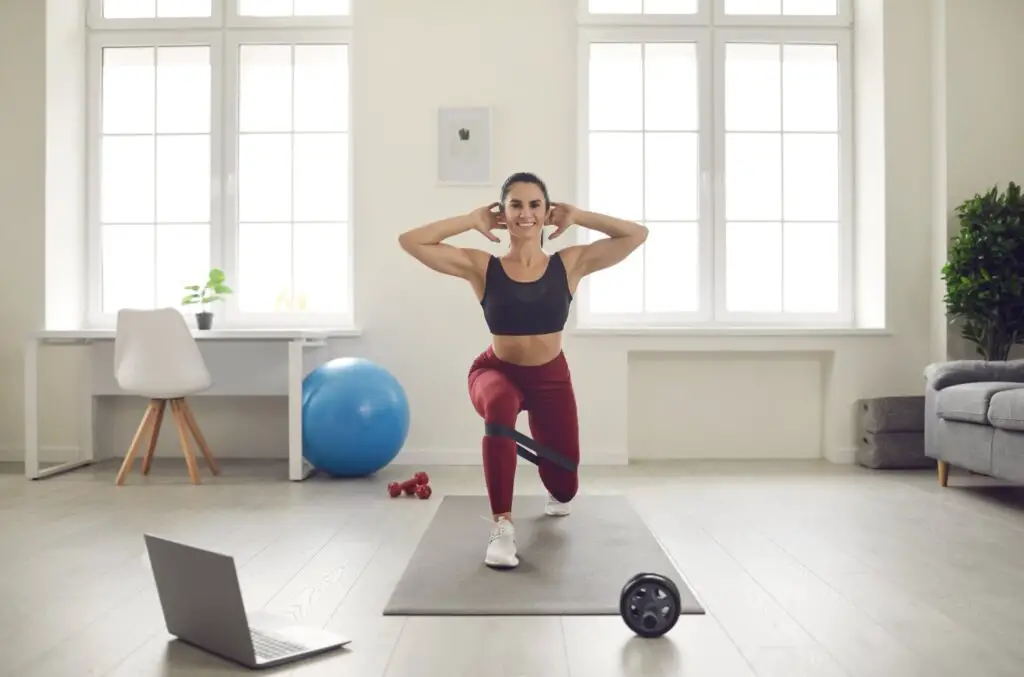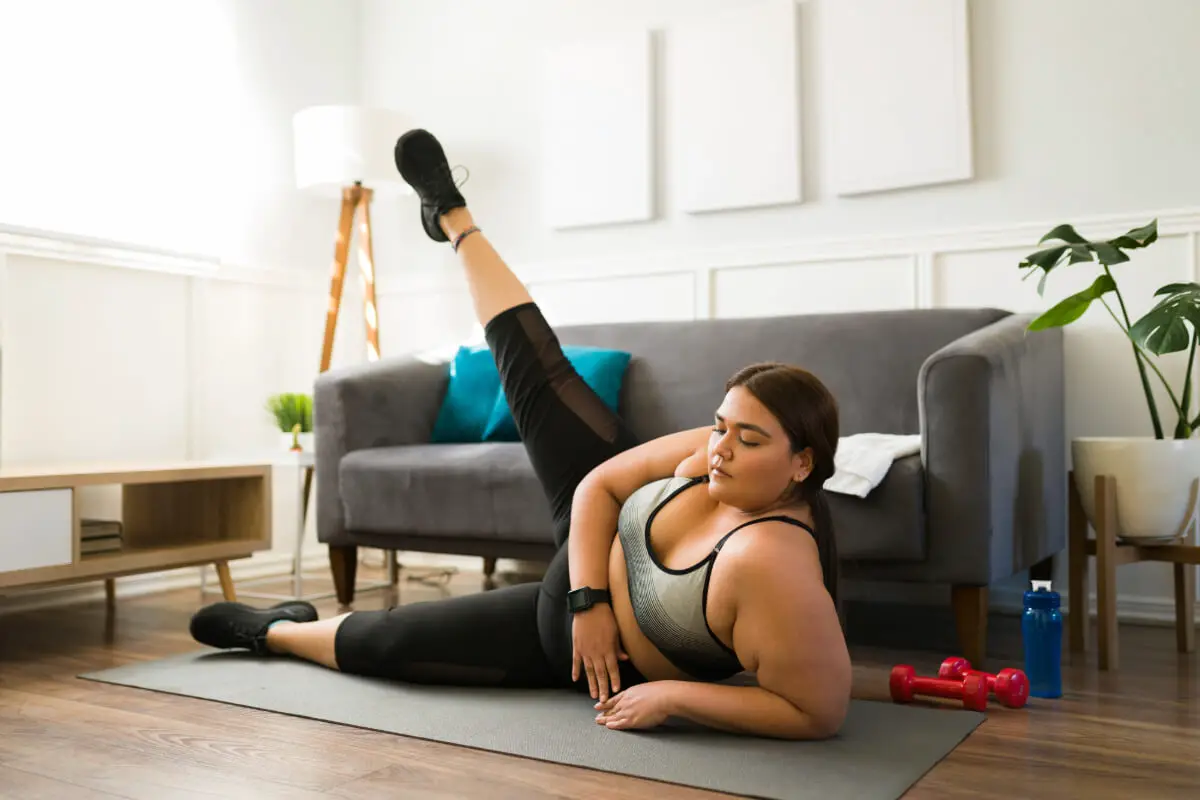Embarking on a journey to improve one’s health and fitness through weight loss and exercise is a commendable endeavor that requires a well-thought-out strategy. This guide provides a structured approach to setting achievable goals, creating an adequate workout space, engaging in exercises that yield results, and maintaining motivation.
By focusing on these critical areas, individuals can navigate their path to wellness with clarity and confidence.
Table of Contents
- Setting Realistic Goals
- Designing Your Workout Space
- Effective Weight Loss Exercises
- Creating a Workout Schedule
- Tracking Progress and Staying Motivated
- Related Question
Setting Realistic Goals
Setting realistic weight loss goals is crucial; they should be specific, measurable, achievable, relevant, and time-bound (SMART). Clear, achievable targets can transform an overwhelming journey into small victories. Start by determining a specific goal weight or body composition you aim for, but ensure it’s grounded in what’s realistic for your body and lifestyle.
Measuring progress is more than watching numbers decrease on a scale. Consider tracking fitness improvements, like completing a workout without stopping or lifting heavier weights. These indicators contribute to weight loss but also highlight the strength and endurance you’re building.
Small, manageable goals contribute to a sense of achievement and make the larger objective seem less daunting. Begin with short-term goals, such as committing to a 15-minute workout daily for two weeks—gradual increases in workout duration or intensity help build endurance and strength without risking burnout or injury.
Patience plays a pivotal role. Quick fixes are tempting, but actual change takes time. Celebrate the small milestones along the way to stay motivated. Consistency is your best friend in this journey; sticking to a routine, even when progress seems slow, ultimately leads to substantial changes.
Choose exercises that easily fit into your daily routine, minimizing the chances of skipping workouts. Home workouts eliminate commute time to a gym, offering flexibility to integrate exercise seamlessly into your day. Combine different types of workouts to keep things interesting and work on various muscle groups for overall fitness improvement.
Remember, weight loss is not just about aesthetics but about improving health. Ensure your goals reflect a desire for a healthier lifestyle, not just a specific number on the scale. Adapting to changes in your body’s needs and abilities as you progress is crucial; be open to reassessing your goals periodically.
By adhering to the SMART principle for goal-setting and embodying patience and consistency, achieving weight loss ambitions through home workouts becomes more transparent and attainable. Through steady effort and perseverance, what once felt like a distant dream can become a proud achievement.

Designing Your Workout Space
Creating an inviting, focused space at home for exercising requires attention to lighting. Natural light boosts mood and energy, so positioning your workout area near a window can capitalize on this. In spaces without natural light, powerful, bright lights mimic daylight and maintain a vibrant environment conducive to activity.
Good ventilation keeps the space fresh and energizing. It may mean setting up near an open window or a fan; fresh air can help maintain energy levels and prevent the room from feeling stuffy, especially during intense workouts. The airflow also helps reduce the buildup of odors associated with exercise.
Designating a specific spot in the home as the workout area helps reinforce the habit. This area doesn’t have to be significant; it simply needs consistency. Using a corner of a room can be enough. The key is to have a space that mentally prepares you for activity as soon as you step into it.
Focus on versatile tools like a yoga mat for floor exercises to equip your home gym effectively without breaking the bank. Resistance bands offer various intensity levels, and a set of dumbbells covers different weights. These are cost-effective and occupy minimal space but can help in many workouts.
Creative alternatives using household items can further enhance your exercise routine. Water bottles can double as light dumbbells, while a sturdy chair is excellent for step-ups, triceps dips, or incline pushups. These adaptable solutions save space and add a fun and inventive twist to keeping fit.
The organization plays a critical role in making your home workout zone appealing. Store equipment neatly and consider dedicating shelves or bins for smaller items like jump ropes or resistance bands. A clutter-free area is more inviting and reduces the time spent setting up, leaving more time for exercise.
Including inspirational elements such as motivational posters, goals lists, or tracking charts in the workout space can provide that extra push on days when motivation dips. Seeing reminders of what you’re working towards can reignite resolve and focus during each session.
Minimizing distractions ensures your workout time is productive. This might mean setting specific times when you’re less likely to be interrupted or using headphones to drown out background noise. Ensuring your phone is shut away or set not to disturb you can also help you focus on the task.
Finally, ensure you have water and a towel handy within your workout space to stay hydrated and manage perspiration without pausing your routine excessively. These small conveniences can make all the difference in keeping up momentum during your workout sessions.

Effective Weight Loss Exercises
Jumping Jacks are an exceptional cardio exercise, igniting calorie burn with their dynamic whole-body movement. By increasing your heart rate, this exercise efficiently torches calories, contributing to weight loss from the comfort of your home.
High Knees provides a powerful cardio workout that aids in weight loss and enhances lower body strength and stamina. Running on the spot with knees up high is a simple yet effective way to incorporate vigorous cardio into your routine without any equipment.
Squats are a cornerstone of strength training, targeting the lower body and core. Their versatility allows for various adaptations, from bodyweight squats to adding resistance to household items, making them essential for weight loss and muscle toning.
Pushups engage multiple muscle groups in the upper body and core, making them an efficient strength training move for at-home workouts. Beyond aiding in building muscle, pushups help increase metabolic rate, which is beneficial for weight loss.
Planks, praised for their core-strengthening capabilities, also play a critical role in weight loss regimens. This isometric hold engages many muscles, increasing caloric expenditure even in a static position.
Burpees combine squats, pushups, and a small jump into one dynamic move that boosts endurance, strength, and calorie burning. Their intense nature makes burpees a highly effective exercise for those looking to lose weight at home.
Yoga promotes flexibility and mindfulness and contributes to weight loss. Specific yoga poses and flows increase heart rate and muscle engagement, offering a gentler alternative to high-impact cardio while supporting weight management goals.
Stretching is essential for maintaining flexibility, preventing injury, and sustaining a consistent weight-loss exercise routine. Incorporating stretching into your workout can enhance performance and enable more practical exercises.
By mixing these exercises, individuals can create a balanced, effective workout routine that not only aids in losing weight but also ensures overall well-being and fitness maintenance. Combining cardio, strength training, and flexibility exercises ensures holistic health benefits and supports lasting weight loss success from the comfort of one’s home.

Creating a Workout Schedule
Remember the mantra: diversity is king when sculpting a workout regimen for shedding pounds. Including a kaleidoscope of workouts ensures you’re not just repeating the same movements, which could lead to a plateau. Mix cardio for heart health and calorie burn, strength training to build muscle and boost metabolism, and flexibility exercises for recovery and injury prevention. It’s like having a well-rounded diet but for your exercise routine.
Start slow, with workouts lasting maybe 20 minutes each day. As your stamina improves, crank it up gradually—think incrementally, increasing the duration or intensity every week. This gradual approach helps build a sustainable habit, reducing the chances of burnout.
Let weekends be your starting point. Plan your most significant or extended workouts for days you’re less swamped with other responsibilities. These peak days can act as your workout milestones each week. In contrast, weekdays might suit quicker sessions or active rest days.
Speaking of rest, don’t skimp on it. Just as your body needs days to push hard, it also needs days to repair and rejuvenate. Aim for at least one full weekly rest day, during which low-impact activities like gentle walking or leisure cycling are as strenuous as they get. This downtime is crucial for muscle recovery and prevents overtraining, which could see those hard-earned gains disappear.
Cycling through different workouts keeps things exciting and works different muscle groups—vital for comprehensive weight loss and body toning. Monday might be cardio-focused, zipping through intervals of jogging or brisk walking.
Tuesday could pivot to strength, incorporating elements like lunges and dumbbell rows using those handy canned goods from the pantry. Wednesdays might wind down with yoga, working in those stellar stretches and poses challenging balance and core strength.
Never underestimate the power of accountability. Schedule these sessions as you would any vital appointment, penciling them into your digital calendar or jotting them down in a planner. Seeing these obligations in black and white can reinforce their importance, making them harder to skip.
Finally, adaptability is critical. If life throws a curveball and Friday’s session gets missed, shuffle workouts around rather than scrapping the entire plan. It might mean enlisting Saturday’s rest day for a workout or tweaking the following week to balance the schedule.
Crafting a sustainable workout schedule for weight loss isn’t just about relentless grinding; it’s about striking the right balance between varied exercise types, incremental challenge increases, ample recovery time, and adapting to life’s unpredictable rhythms. This approach not only aids weight loss but paves the way for a lifetime of healthy, active living.

Tracking Progress and Staying Motivated
Shedding light on progress tracking and motivation strategies becomes crucial to elevating your journey of adjusting and maintaining an effective fitness routine. Harnessing the power of a meticulously kept workout journal presents an unwavering foundation for scrutinizing triumphs and areas necessitating enhancement. Detailing each workout’s specifics, from duration to intensity and the exact exercises undertaken, imbues a sense of achievement and a tangible pathway to gauge progress.
In the digital age, fitness apps emerge as indispensable aides, providing a platform to log workouts and analyze trends and improvements over time. Their ability to offer immediate feedback and the convenience of having your fitness data at your fingertips offers a seamless method to ensure your goals remain within reach.
Embracing the transformation process requires various techniques to keep the momentum alive. From the tangible—tracking in journals and apps—to the emotional—setting and celebrating milestones—and the communal—engaging with fitness communities—each strategy interlocks, forming a robust framework supporting not just the pursuit of fitness goals but also fostering an enduring lifestyle shift towards wellness and vitality.
In conclusion, setting realistic goals is the cornerstone of any successful fitness journey. By adhering to the SMART principle and embracing patience and consistency, individuals can transform their aspirations into tangible achievements.
Remember, the path to wellness is not a sprint but a marathon, where small, consistent steps lead to significant, lasting changes. Let this guide serve as your roadmap to a healthier, more fulfilled life.
At Reluctant Low Carb Life, we are staunch advocates of the Health Trifecta: Fullness, Fitness, and Freshness. Additionally, we embrace the pillars of health, wellness, and graceful aging. Our mission is to provide honest and precise information to individuals dedicated to adopting a healthy lifestyle while enhancing their fitness and well-being.
We have a free monthly newsletter that is filled with information and helps you remain updated. Subscribe to the Reluctant Low Carb Life newsletter by clicking here.
Listen to our weekly podcast, Reluctant Low Carb Life, on all the major podcast platforms by clicking here.
Follow us on Instagram and Facebook by clicking here.
Related Question
More Effective Weight Loss: Keto Or Calorie Deficit?
We find the keto diet a more effective way to lose weight because your body turns your stored body fat into weight loss. Many people also lose weight on the calorie deficit diet. You must watch what you eat and how much you eat on both diets. Both diets want you to cut out on sugar, and the keto diet wants you to cut out on carbohydrates.
You can read more about More Effective Weight Loss: Keto Or Calorie Deficit? by clicking here.
Losing Weight On Low Carb Without Exercise
You can lose weight on a low-carb or keto diet without exercising. Exercise is only 10% of the weight-loss equation, whereas the low-carb and keto lifestyle will account for at least 90%. For someone to lose weight on a low-carb diet, they need to follow the low-carb diet for ultimate success.
You can read more about Losing Weight On Low Carb Without Exercise by clicking here.
What Are Normal Blood Sugar Levels?
Most healthcare professionals will look at several blood sugar level tests to check if your blood sugar levels are normal. The three significant tests are the A1C blood sugar level, the fasting blood sugar test, and the glucose tolerance test. All these tests have different numbers that help show if you have a normal blood sugar range.
You can read more about What Are Normal Blood Sugar Levels? by clicking here.








